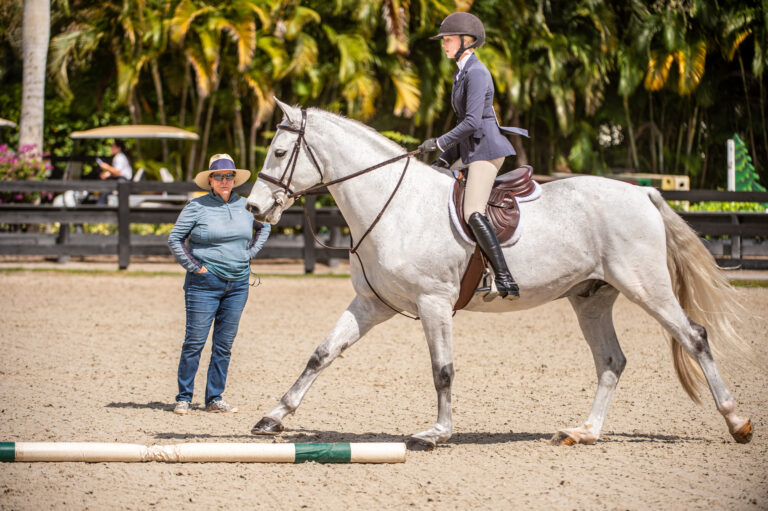
This unexpected journey began with a random viewing of a YouTube video titled “Saddlebred Rescue Adoption Day in New York” a few years ago. I had been surfing the net and looking at horses after putting my beloved gelding down because of a painful neurologic condition. Over the decades I had evented, ridden dressage, foxhunted and trail- rode, but as a 57-year-old with neck issues, I was not sure of my next move. Ruled out were any more 4-year-olds or off-the-track Thoroughbreds. Saddlebreds had been off my radar since one had been my favorite school horse as a girl.
But then I came across the video of rescued Amish buggy horses, some of whom had been headed for slaughter. With Saddlebreds back on my radar, I found a rescue organization with a former Amish buggy horse described as a sporthorse prospect not too far away from my home in Middletown, Maryland. Asking my good friend to come along for support, we headed up the interstate.
I met “Harry” in the rain. He was a tall, angular, 9-year-old chestnut, spare of frame. His head was narrow and pretty with ears that nearly touched at the tips. His legs were clean, but one front hoof scooped out at an angle. The woman who fostered him told us Harry had been with the Amish for about a year and was used for trips of up to 80 miles. We tacked up and when I sat on him, his long, thin neck rose up like a periscope in front of me, giving new meaning to the term “uphill.” Wow, he was way outside my box! He needed a good thump with my legs to get going and we quietly trotted around in the mud.
I returned to see Harry two more times. His registered name was “He’s Some Kinda Wonderful.” He was not gaited, his stride had reach and his mouth was soft. Getting a canter was not easy, but when we went out on the trails, he was a star—calm and intelligent. On the last visit, I dismounted, stood in front of him and looked. He lowered his head and looked back. Did I mention he has beautiful eyes? The adoption went smoothly. Harry passed the vet exam and came to the farm with rolling hills where I boarded.
People were polite but surprised when I brought Harry home. My farrier called him “Noodle Neck.” In the ring he was rubbery, hollow and counter-flexed. It was difficult to get a 20-meter circle. He was treated for stomach ulcers and became more responsive to the leg. His back and topline were weak, so we started walking the hills and fields, often with my friend on her sensible mare. I began to gently ask him to start stretching his neck out longer and lower. Harry was a kind, friendly, goofy kind of guy with a big personality. Getting a canter in the ring was still not pretty, but I found that out in the fields this boy could gallop. I had him looked over by an equine chiropractor, who told me in six to nine months Harry was going to be “the best horse you ever had.” My reply: “I seriously doubt it.”
Over the months our cross-training outside the ring paid off. Harry gained almost 250 pounds and his topline muscled up, softening his angles into curves. He was going in a rounder frame, and canter transitions became easy thanks to his natural balance. We schooled over fences, and he was honest and capable.
We moved to a barn with an indoor arena and dressage trainer to start to put the work all together. He progressed quickly. We began lateral exercises. Harry loved his work and all the attention. His topline continued to develop. This horse I once had to thump with my legs to get going was now light and responsive. My trainer liked him. “Really?” I asked. I took him to a hunter pace and had a blast. After a productive lesson, my trainer said she thought he had the talent and temperament to be an upper-level dressage horse. “Really?”
My plan is to continue to train Harry and see where it takes us, keeping a sense of humor and profound gratitude as to how this journey unfolded. I have been pondering, which is my wont in later middle age. Good can arise from loss. Harry had been a harness show horse and a work horse and now is being asked to do a bunch of things way outside his box. Maybe the lesson is to keep our hearts wide open and take a chance. Then, surprising and unforeseen things are possible.
This article was originally published in the September 2017 issue of Practical Horseman.
Are you searching for your perfect horse? Try a rescue! Go to Equine.com, the premier classifieds site of the Equine Network, and to A Home for Every Horse to find your next equine partner!










